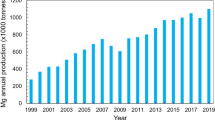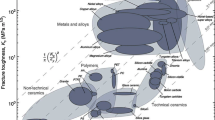Abstract
This study was conducted to evaluate the effect of the grain size and orientation on the formation of deformation twins in Ti-15Mo alloy. For this material, cold rolling was carried out to achieve a 90% thickness reduction on the samples. In order to recrystallize the severely deformed alloy and to obtain two types of grain sizes, the alloys were then annealed at 900 °C for 1 and 30 min, respectively. After this work, electron backscattered diffraction was introduced to analyze grain boundary character distributions. As a result, the coarsened grains (average size ~154 μm) formed denser deformation twins relative to that of the finer grains (average size ~25 μm), which was attributed to the grain boundary constraint and orientation. These effects led to an enhancement of the strain-hardening constant of the alloy, which in turn resulted in a notable increase in the elongation without any significant decrease in the tensile strength. In this study, we systematically discussed the formation of twins in terms of grain size and Schmid factor.






Similar content being viewed by others
References
Bouaziz O, Allain S, Scott CP, Cugy P, Barbier D (2011) High manganese austenitic twinning induced plasticity steels: a review of the microstructure properties relationships. Curr Opin Solid State Mater Sci 15:141–168. doi:10.1016/j.cossms.2011.04.002
Lai HJ, Wan CM (1989) The study of work hardening in Fe-Mn-Al-C alloys. J Mater Sci 24:2449–2453. doi:10.1007/bf01174510
Kim TW, Kim YG (1993) Properties of austenitic Fe-25Mn-1Al-0.3C alloy for automotive structural applications. Mater Sci Eng A 160:13–15. doi:10.1016/0921-5093(93)90463-O
Lee Y-K (2012) Microstructural evolution during plastic deformation of twinning-induced plasticity steels. Scr Mater 66:1002–1006. doi:10.1016/j.scriptamat.2011.12.016
Kim J, Estrin Y, De Cooman BC (2013) Application of a dislocation density-based constitutive model to al-alloyed twip steel. Metall Materi Trans A 44:4168–4182. doi:10.1007/s11661-013-1771-2
Cooman CB, Chen L, Kim SH, Estrin Y, Kim KS, Voswinckel H (2009) State-of-the-Science of High Manganese TWIP Steels for Automotive Applications. In: Haldar A, Suwas S, Bhattacharjee D (eds) Microstructure and texture in steels: and other materials. Springer, London
Fonstein N (2015) Advanced high strength sheet steels: physical metallurgy, design, processing, and properties. Springer, New York
Banerjee D, Williams JC (2013) Perspectives on Titanium Science and Technology. Acta Mater 61:844–879. doi:10.1016/j.actamat.2012.10.043
Sun QY, Song SJ, Zhu RH, Gu HC (2002) Toughening of titanium alloys by twinning and martensite transformation. J Mater Sci 37:2543–2547. doi:10.1023/a:1015456026919
Weiss I, Semiatin SL (1998) Thermomechanical processing of beta titanium alloys—an overview. Mater Sci Eng, A 243:46–65. doi:10.1016/S0921-5093(97)00783-1
Takemoto Y, Shimizu I, Sakakibara A, Hida M, Mantani Y (2004) Tensile behavior and cold workability of Ti-Mo alloys. Mater Trans 45:1571–1576. doi:10.2320/matertrans.45.1571
Min X, Chen X, Emura S, Tsuchiya K (2013) Mechanism of twinning-induced plasticity in β-type Ti–15Mo alloy. Scr Mater 69:393–396. doi:10.1016/j.scriptamat.2013.05.027
Wang CH, Yang CD, Liu M et al (2016) Martensitic microstructures and mechanical properties of as-quenched metastable β-type Ti–Mo alloys. J Mater Sci 51:6886–6896. doi:10.1007/s10853-016-9976-6
Carter G, Flower HM, Pennock GM, West DRF (1977) The deformation characteristics of metastable β -phase in a Ti-15 wt% Mo alloy. J Mater Sci 12:2149–2153. doi:10.1007/bf00552235
Barbier D, Gey N, Bozzolo N, Allain S, Humbert M (2009) EBSD for analysing the twinning microstructure in fine-grained TWIP steels and its influence on work hardening. J Microsc 235:67–78. doi:10.1111/j.1365-2818.2009.03182.x
Meng L, Yang P, Xie Q, Ding H, Tang Z (2007) Dependence of deformation twinning on grain orientation in compressed high manganese steels. Scr Mater 56:931–934. doi:10.1016/j.scriptamat.2007.02.028
Yang P, Xie Q, Meng L, Ding H, Tang Z (2006) Dependence of deformation twinning on grain orientation in a high manganese steel. Scr Mater 55:629–631. doi:10.1016/j.scriptamat.2006.06.004
Meyers MA, Vöhringer O, Lubarda VA (2001) The onset of twinning in metals: a constitutive description. Acta Mater 49:4025–4039. doi:10.1016/S1359-6454(01)00300-7
Barnett MR, Keshavarz Z, Beer AG, Atwell D (2004) Influence of grain size on the compressive deformation of wrought Mg–3Al–1Zn. Acta Mater 52:5093–5103. doi:10.1016/j.actamat.2004.07.015
Ueji R, Tsuchida N, Terada D et al (2008) Tensile properties and twinning behavior of high manganese austenitic steel with fine-grained structure. Scr Mater 59:963–966. doi:10.1016/j.scriptamat.2008.06.050
Ueji R, Tsuchida N, Harada K, Takaki K, Fujii H (2015) Effect of initial grain size on inhomogeneous plastic deformation and twinning behavior in high manganese austenitic steel with a polycrystalline microstructure. IOP Conf Seri Mater Sci Eng 89:012045
Barnett MR (2008) A rationale for the strong dependence of mechanical twinning on grain size. Scr Mater 59:696–698. doi:10.1016/j.scriptamat.2008.05.027
Tsai MS, Chang CP (2013) Grain size effect on deformation twinning in Mg–Al–Zn alloy. Mater Sci Tech 29:759–763. doi:10.1179/1743284713Y.0000000237
Author information
Authors and Affiliations
Corresponding author
Ethics declarations
Conflicts of interest
The authors declare that they have no conflicts of interest.
Rights and permissions
About this article
Cite this article
Im, Y.D., Lee, Y.K., Park, H.K. et al. Effect of the initial grain size and orientation on the formation of deformation twins in Ti-15Mo alloy. J Mater Sci 52, 11668–11674 (2017). https://doi.org/10.1007/s10853-017-1314-0
Received:
Accepted:
Published:
Issue Date:
DOI: https://doi.org/10.1007/s10853-017-1314-0




